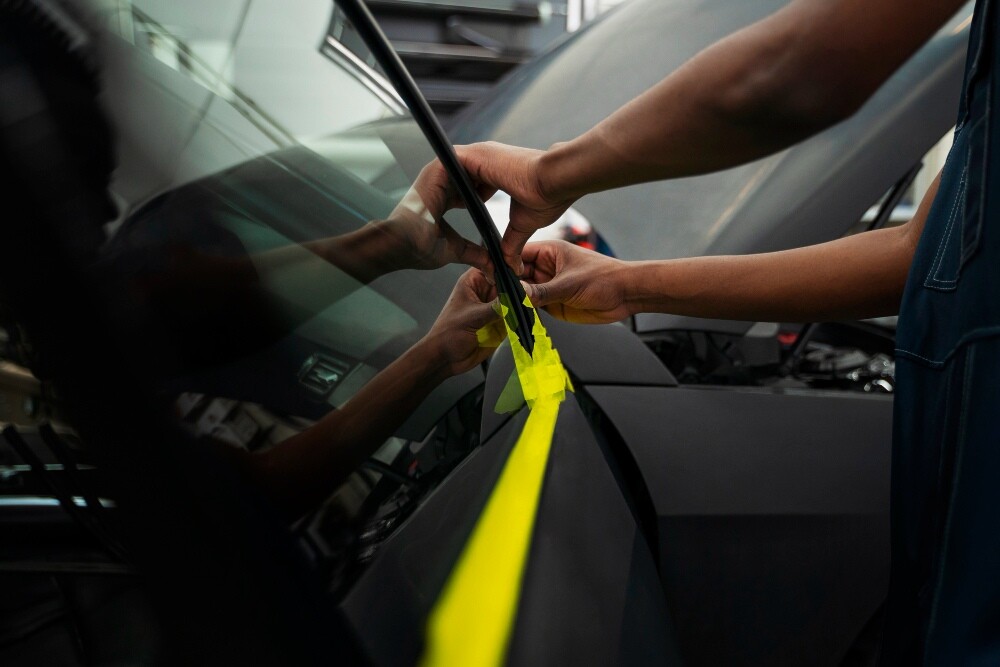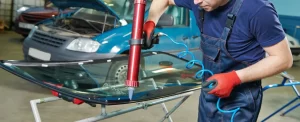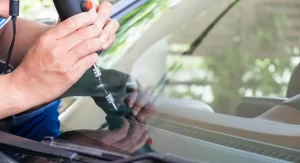Advanced Driver-Assistance Systems (ADAS) are essential for maintaining both the driver’s safety and the overall performance of current, technologically advanced cars. Replacing a windshield involves more than just changing the glass. Calibration of the new windshield is an important process that is occasionally overlooked.
This article will explain the important relationship between windshield calibration and ADAS performance. We’ll go over why calibration is more than just a technical detail; it’s a key element of keeping people safe, ensuring your ADAS functions properly, and even managing the legal and insurance implications. So come along with us as we learn why post-replacement windshield calibration is more than a formality—it’s a key step in increasing vehicle safety and the effectiveness of advanced driving technology.

Do I Need to Recalibrate After Windshield Replacement? Your Query Answered.
Important safety features in your car may stop working or stop functioning if your ADAS components are not calibrated correctly following a windshield repair. This may significantly raise your chance of getting into an accident while driving.
Every time you replace or remove any of the sensors or other ADAS components on or in your windshield, auto-glass calibration is required. This implies that calibration is necessary whenever a windshield is replaced on a vehicle equipped with ADAS technology.
Why is windshield calibration important for your car after replacement?
Lifesaving Tech: ADAS’ Role in Accident Prevention
Advanced Driver Assistance Systems (ADAS), which include features like collision warning, automated emergency braking, and lane-keeping assistance, are critical to guaranteeing road safety by saving lives and reducing accidents. The accuracy of a system’s calibration directly affects how effective it is. When precisely calibrated, ADAS performs flawlessly, giving timely alarms and interventions.
This calibrated response aids in reducing the severity of probable collisions. When tuned perfectly, collision warning, automatic emergency braking, and lane-keeping all work together to make driving a lot safer. In summary, precise calibration is the key to ADAS functioning smoothly, providing a proactive defence mechanism that eventually improves overall road safety.
Precision Matters: Calibration’s Role in ADAS Functionality
The complicated network of ADAS operations is strongly reliant on precision, and at the heart of it all is proper calibration. Investigating the role of exact calibration exposes its direct impact on maintaining sensor and camera accuracy, which serve as the eyes and ears of these sophisticated systems.
A properly calibrated ADAS guarantees that these sensors offer accurate and real-time data, allowing the system to respond efficiently to changing road conditions. The connection between proper calibration and optimal system functionality is evident, highlighting the significance of this frequently ignored area in the world of automotive technology.
Camera Realignment:
Due to many considerations, windshield calibration is essential after replacement. The accuracy of Advanced Driver Assistance Systems requires camera realignment. Lane departure warning and autonomous emergency braking depend on camera placement. Calibration ensures that cameras correctly interpret the road’s surroundings, improving the vehicle’s performance.
Sensor Accuracy:
Replacing the windshield reduces the accuracy of windshield-mounted sensors like rain and light sensors. These sensors automatically adjust wipers and lighting, improving driving comfort and safety. These sensors must be calibrated to produce accurate data. Sensors may misread environmental conditions without adequate calibration, resulting in inferior automated system performance.
Types of ADAS Calibration:
To calibrate an ADAS system, the sensors, cameras, and radar elements comprising the system are precisely aligned and configured per its requirements. Usually, the process involves putting the car on a flat surface, using special tools to set the angles and dimensions of the sensors, and then driving the car in certain ways to do dynamic calibration.
A mix of static and dynamic procedures are used in ADAS calibration.
Static Calibration:
Static calibration is performed in a regulated environment, such as a workshop or specialist calibration center. This involves the exact alignment and calibration of sensors, cameras, and radar systems in accordance with the manufacturer’s instructions.
Dynamic Calibration:
Dynamic calibration, on the other hand, happens during a test drive. This lets the car’s systems adjust and fine-tune settings based on how the driver will actually use the car. This two-pronged method makes sure that ADAS works correctly in both controlled and uncontrolled situations.
Addressing Concerns and Queries
Many questions emerge when calibrating Advanced Driver Assistance Systems (ADAS). Since ADAS relies on perfect sensor alignments, calibration precision is a prevalent issue. To address this issue, trained professionals and cutting-edge calibrating equipment are needed. Regular technician training and staying up-to-date on the newest calibration procedures and technology help to reduce potential difficulties.
Frequency of Calibration:
The frequency of ADAS calibration is crucial. After an accident, windshield replacement, or suspension adjustment, ADAS calibration is needed, unlike ordinary vehicle maintenance. However, manufacturer recommendations and ADAS type can affect frequency. Knowing the manufacturer’s standards and routinely checking the vehicle’s ADAS capability will help decide when calibration is needed for optimal performance and safety.
Cost Considerations:
Vehicle owners and service providers must consider ADAS calibration costs. The kind of ADAS system, number of sensors, and calibration equipment affect calibration costs. Vehicle owners should be mindful of ADAS calibration fees, even if some insurance policies may cover them after certain events. Speedy Windshield is highly affordable in its ADAS calibration services. We not only offer quality services but also provide affordable rates.
Is windshield recalibration a service that every auto glass repair shop offers?
Not every auto glass repair shop provides windshield recalibration. Windshield recalibration necessitates sophisticated equipment and trained specialists who understand the complexities of advanced driver assistance systems (ADAS). While many auto glass repair businesses can replace windshields, not all of them can also conduct the recalibration.
We are one of those auto glass repair service providers who offer windshield recalibration along with windshield repair and replacement. Our team has years of experience in these specific services.
Final Words
In the rapidly changing world of car safety, post-replacement windshield calibration is a critical step that is frequently forgotten. This step shouldn’t be ignored, as it puts your safety at risk. To avoid any inconvenience, your windshield is calibrated after replacement. From safety to the optimal performance of your vehicle, it should be prioritized. After availing yourself of calibration services, you will realize that these services are worth your time and money.
From windshield calibration to ADAS calibration, Speedy Windshield Repair offers top-notch services. We offer a cost-effective safety solution for your ADAS automobiles. We provide a wide range of auto glass services, such as windshield chip repair, windshield replacement, window replacement, back window repair, and windshield repair.



